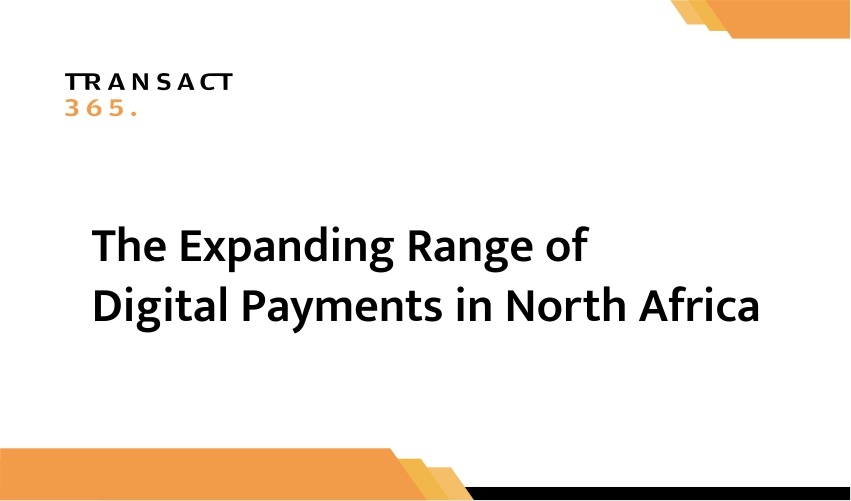
The Expanding Range of Digital Payments in North Africa
3 min read
North Africa’s payments landscape is changing fast. What was a region long defined by cash, big informal economies and limited card reach is now seeing a proliferation of digital payment rails — from instant bank transfers and mobile wallets to tokenized cards, contactless acceptance and merchant-focused point-of-sale solutions. That shift is being driven by regulators, telcos and fintechs working together, changing consumer habits and a clear business case: a larger digital-payments market across the MENA region is already worth tens of billions and growing rapidly.
What’s expanding — the new payment toolbox
Several distinct payment types are now scaling across North Africa:
- Instant bank rails and real-time transfers — Central banks in the region have been rolling out faster payment systems and promoting fee-free or low-fee instant transfers to encourage non-cash flows. In Egypt, for example, instant transfer networks and apps have driven millions of new digital accounts in a short span.
- Mobile wallets and e-money — Homegrown mobile-wallet apps and telco-led e-money are becoming common, especially in places where traditional bank penetration remains limited. These wallets let users pay merchants, top up airtime, pay bills and receive remittances without a traditional bank account. GSMA and industry reports show global and regional mobile-money adoption remains a major growth engine.
- Card tokenization and mobile NFC — Tokenized card provisioning to smartphones and the arrival of Apple/Google pay integrations in some markets reduce friction for e-commerce and contactless retail. Egypt’s central bank and payment ecosystem moves toward tokenization are an example of authorities encouraging modern, secure wallet-based payments.
- Merchant point-of-sale (POS) and QR payments — Low-cost POS devices, QR codes and soft-POS (phone-as-POS) are allowing small shops and micro-merchants to accept digital payments for the first time, accelerating formalization and traceability.
- Cross-border and remittance rails — Regional remittance corridors and fintechs are lowering the cost of cross-border transfers — critical for economies with sizable migrant or diaspora inflows.
Country snapshots: different speeds, same direction
North African countries are not moving in lockstep, but the common trend is unmistakable.
- Egypt has made deliberate policy choices and pushed an “insta-pay” agenda that helped onboard millions of users quickly — public policy, fintech competition and merchant acceptance have combined to drive fast adoption. Egypt is positioning itself as a payments hub in the region.
- Morocco has a growing fintech community, improving payment infrastructure and an active effort to boost financial inclusion through mobile wallets and fintech partnerships. Industry associations and incubators are increasing developer and merchant support.
- Tunisia is seeing platform-economy growth and targeted initiatives to link digital platforms with payments, making it easier for small vendors and freelancers to receive money digitally.
- Algeria has been more cautious but is showing rapid increases in digital transaction volumes and expanding card and mobile payment usage as regulators and banks push reform. A jump in digital transactions reported in 2024 signals accelerating momentum.
Why adoption is accelerating
Several reinforcing factors explain why digital payments are expanding now:
- Regulatory nudges and infrastructure upgrades. Central banks increasingly favor real-time payment systems, tokenization standards and clearer licensing for payment service providers — policies that reduce friction and risk for consumers and businesses.
- Smartphone and mobile-internet penetration. Growing mobile internet usage provides the distribution channel for wallets and app-based payments.
- Private-sector investment and fintech ecosystems. Banks, startups and global players are investing in local payments infrastructure and partnering to scale solutions for remittances, payroll, merchant payments and e-commerce.
- Consumer behaviour change. Young, urban populations and pandemic-era habit shifts have increased comfort with non-cash channels — once a critical mass is reached, merchant acceptance follows quickly.
Bottom line
North Africa is moving from a cash-centric status quo to a layered payments ecosystem where mobile wallets, instant rails and affordable merchant acceptance coexist. The pace will vary by country, but North Africa is converging to make digital payments a mainstream part of everyday life across the region. For consumers and firms, that means lower friction, more financial access and new digital commerce opportunities.
Find out about our North Africa payment solutions HERE.


